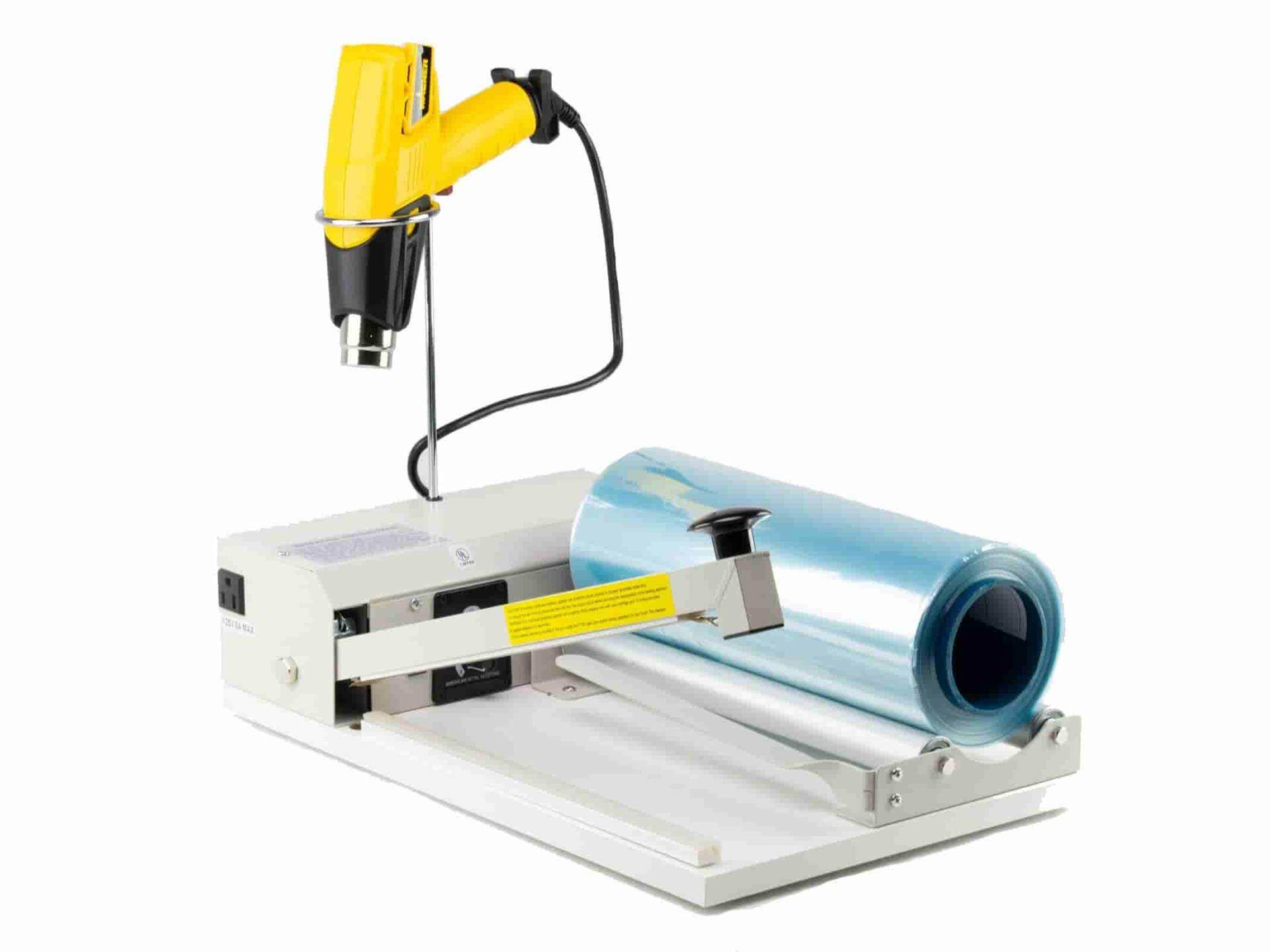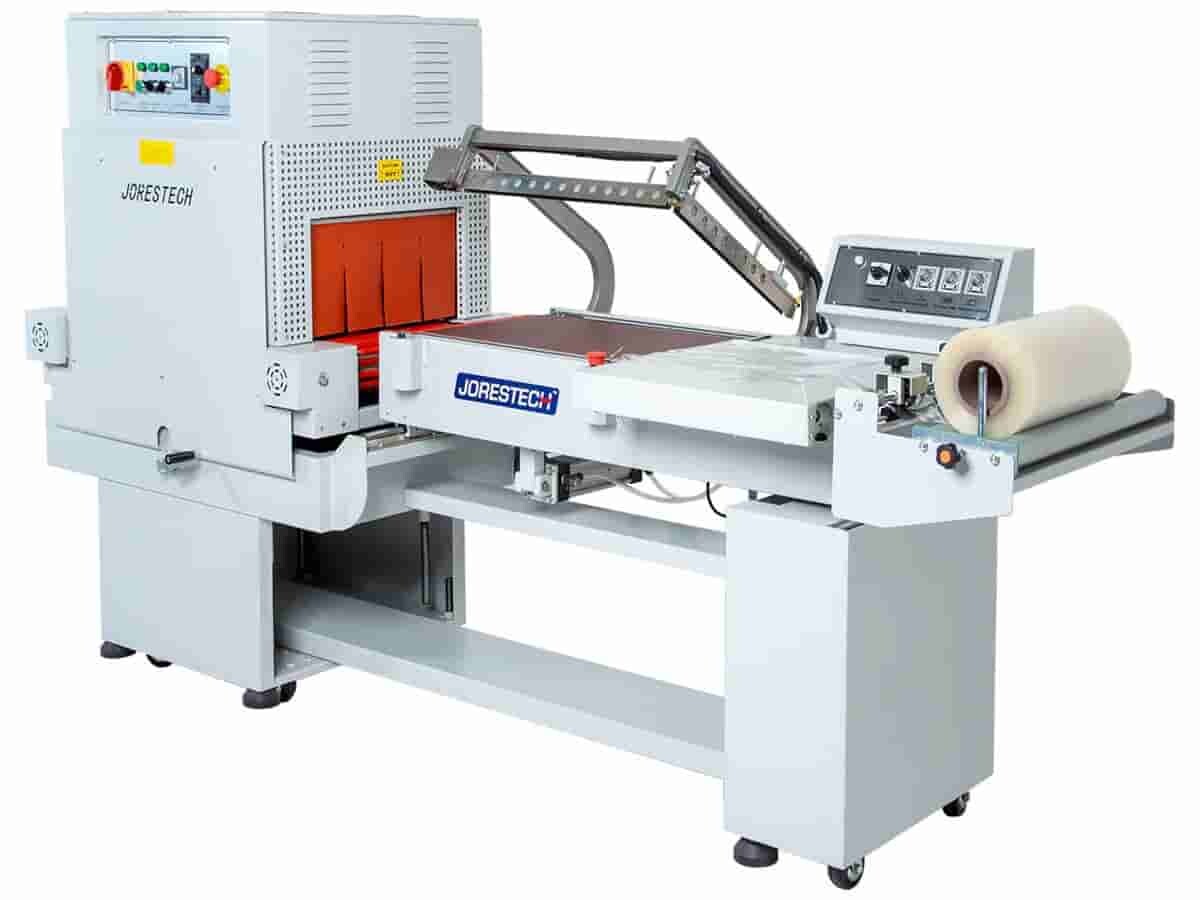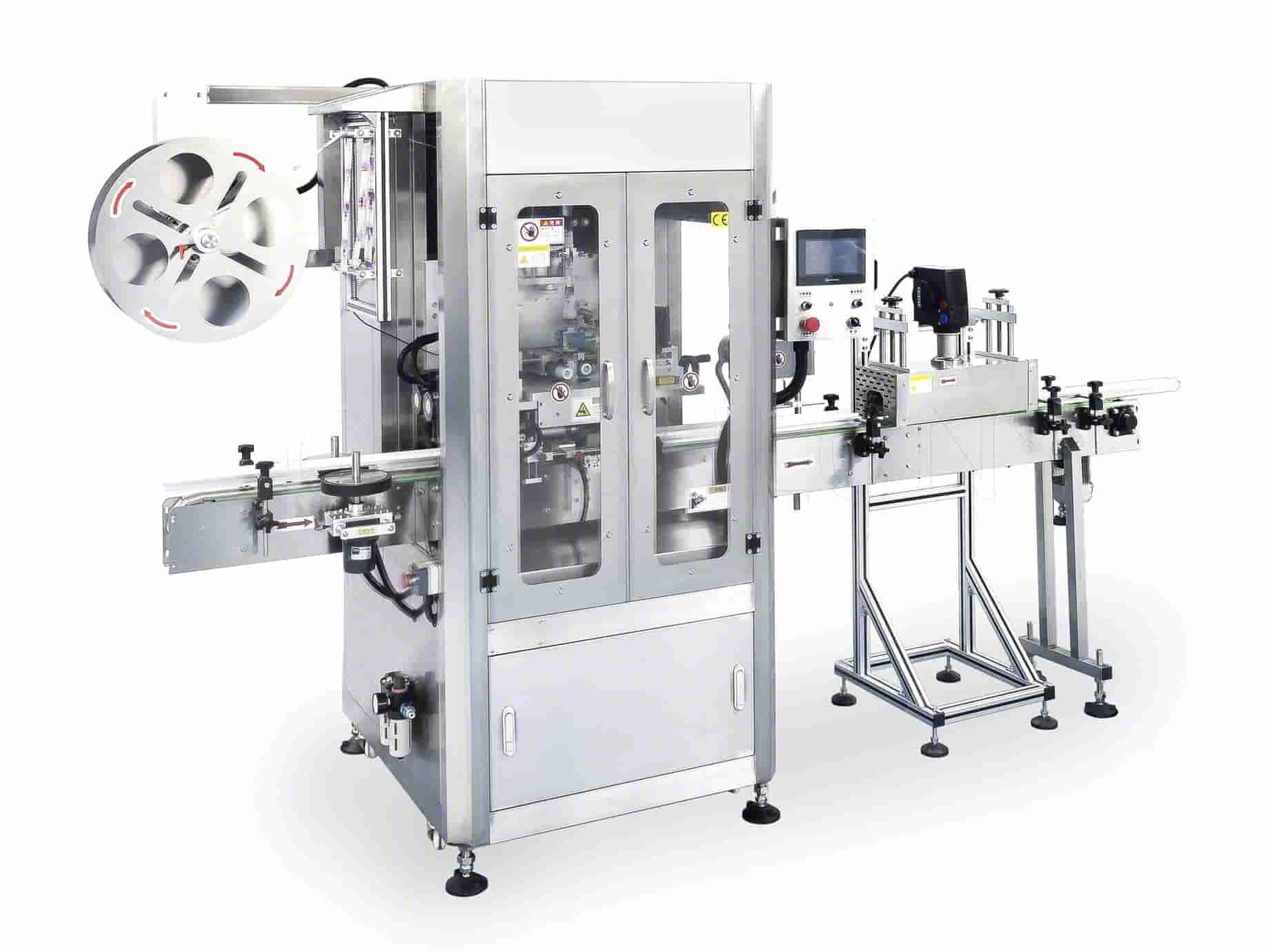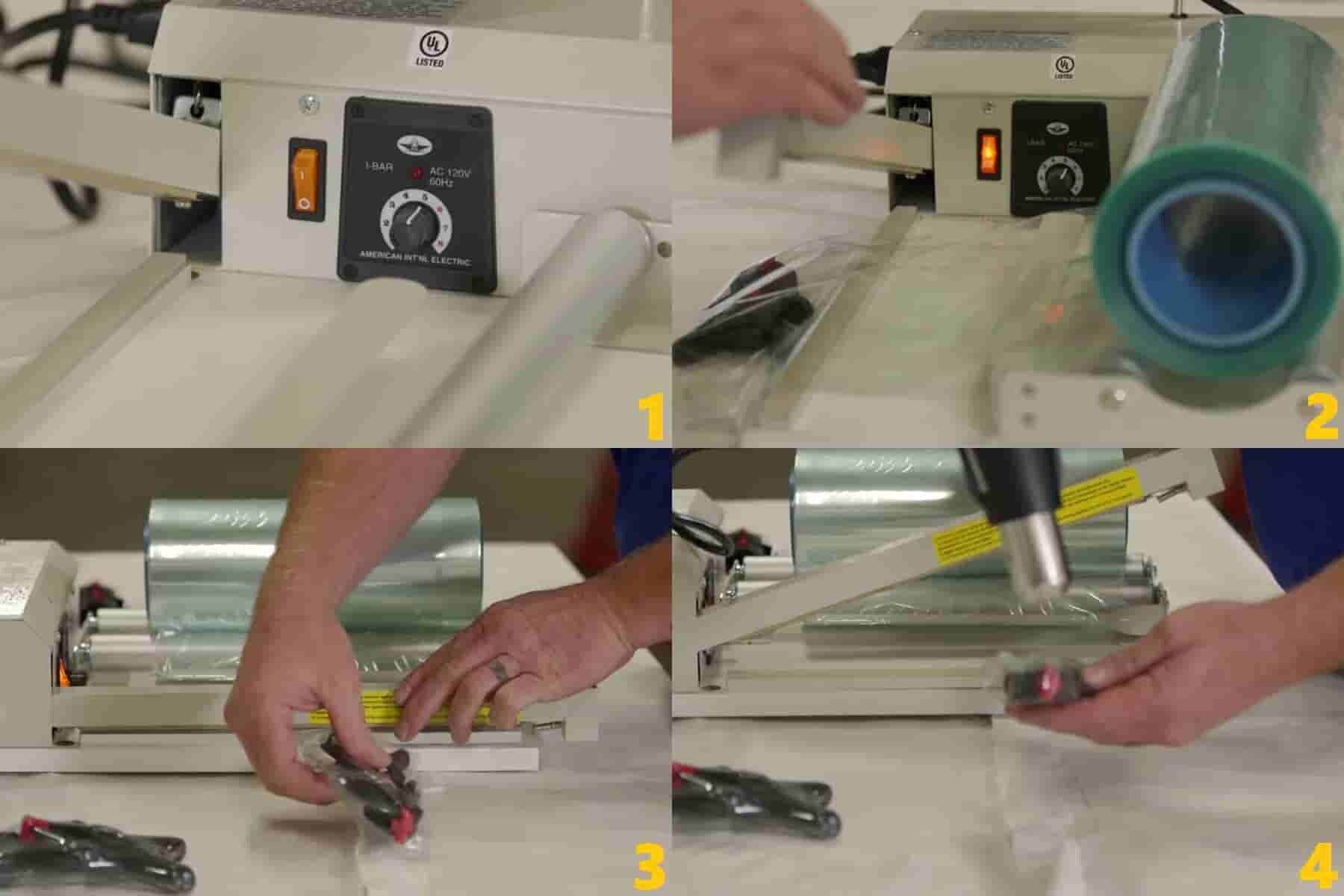Exploring the Shrink Wrap Machine Working Principle
Shrink wrapping is one of the most popular packaging methods today. This method creates a form-fitting layer of packaging when you want to provide your products with extra protection and branding. Shrink wrapping is used daily in the packaging world. A wide selection of styles is available to meet different application needs.
|
Shrink Wrapping Type |
Material |
Application |
Examples of Items Wrapped |
|
Shrink Banding |
PVC Film |
Wrapping bottles for safety seal; prevents tampering |
Liquid medicines, bottled drinks, shampoos, salad dressings |
|
Shrink Bags |
PVC or Polyolefin Shrink Wrap |
Packaging with three closed sides, open at the top |
CDs, DVDs, books, soap, toys, printed stationary, biscuits |
|
Shrink Sleeves |
Pre-cut Printed Shrink Film |
Slid over bottles and jars for advertising and info |
Drink bottles, medicine bottles, cleaning supplies |
|
Shrink Bundling Film |
Single-wound Polyethylene Sheeting |
Bundling multiple items together; flat off the roll |
Bottled goods, canned goods |
So, how do you package products with shrink wrap? A shrink wrap machine is all you need. This machine is like a reliable assistant for your packaging process. Whether you're a first-time user or looking to get the most out of your shrink wrap machine, you must know how this machine works. That's why we composed this post. By the end of the post, you will grasp everything essential to use the shrink wrap machine properly.
Types of Shrink Wrap Machines
Like most packaging machinery, shrink wrap machines come in an array of styles. Each has varying levels of automation and packaging capacity. There are three major types of shrink wrap machines in the market right now. They are:
- I-Bar Shrink Wrap Systems

- L-Bar Shrink Wrap Systems

- Continuous Shrink Wrap Machines

How Does a Shrink Wrap Machine Work
Although there are many different types of shrink wrap machines, they work on a similar principle. The shrink wrap machine working principle is quite straightforward. These machines work by using heat to shrink a plastic film to form a tight, protective cover around a product. The heat source is typically from a heat gun or a heat tunnel.
How to Use a Shrink Wrap Machine
Using a shrink wrap machine is not a complicated task. Yet, it can vary slightly depending on your machine type. Let's explore how to use different types of shrink wrap machines.
I-Bar Shrink Wrap System
An I-Bar shrink wrap machine consists of two parts: an I-Bar sealer and a heat gun. The I-bar sealer is an impulse sealer. It's typically a manual device with a single sealing bar and a feed roll. The heat gun generates heat to shrink the film wrapped around the product.

(Screenshot Source: US Packaging & Wrapping)
STEP 1: Turn on the power switch of the I-Bar sealer. Set the sealing temperature.
STEP 2: Pull the length of the centerfold shrink film depending on the size of the product being wrapped.
STEP 3: Place your product within the centerfold shrink film. Make sure the product is positioned properly for wrapping.
STEP 4: Lower the sealing bar to cut the film to the desired size. A straight seal is created on the open end of the film.
STEP 5: Raise the sealing bar. Use a hand-held heat gun (often included in the machine) to apply heat to the wrapped product. The heat shrinks the film and creates a snug fit around the product.
STEP 6: Place the wrapped product aside to let it cool down. Check if the shrink wrapping is intact. If not, repeat the process until a tight finish is formed around the product.
L-Bar Shrink Wrap System
Like the I-Bar option, L-Bar shrink wrap systems perform the wrapping process by using an L-Bar impulse sealer and a heat source for shrink. The L-Bar sealer comes in a square frame with two sealing bars intersecting to form an L. Compared with the I-Bar systems, they are more efficient as they can run at a higher speed and often work together with a conveyor. Additionally, L-Bar shrink wrap systems are available in manual and automatic models.
STEP 1: Turn on the power switch on the control panel of the L-Bar sealer. Adjust the temperature and conveyor settings.
STEP 2: Insert the product to be wrapped into the centerfold shrink film. Make sure it's properly aligned.
STEP 3: Pull the centerfold shrink film with the product. Ensure the film length is enough for cutting.
STEP 4: Pull the square frame down, allowing the L-shaped sealing bars to cut and seal the film on two adjacent sides. A L-shaped seal is formed around the product.
STEP 5: Raise the frame. It's worth mentioning that if you choose an automatic L-Bar sealer, the sealing bars will lift by themselves.
STEP 6: Use a heat gun to shrink the film. In the case of a shrink tunnel, place the wrapped product on the conveyor of the tunnel. As the product passes through the tunnel, the heat is evenly distributed onto the film to form a tight fit around the product. If you're using an automatic L-Bar sealer, connect the sealer's conveyor to the tunnel's conveyor. This allows the wrapped product to be transferred to the tunnel when the square frame rises.
STEP 7: Place the product aside and allow it to cool. Inspect the shrink wrapping effect. Repeat the process if any issue is found.
Continuous Shrink Wrap Machine
A continuous shrink wrap machine is typically a fully automatic shrink wrapping machine. It can wrap and seal products without human involvement. The continuous shrink wrap machine can handle a constant flow of products at a high speed. This type of machine is ideal for high-volume shrink wrapping operations. It can often be integrated into an existing packaging or production line.
STEP 1: Turn on the shrink wrap machine. Set all parameters on HMI. Start the shrink wrapping process.
STEP 2: The products to be wrapped are fed into the machine through a feed conveyor. A pair of spacer wheels is mounted on both sides of the conveyor. These components are used to stop the passing products for seconds and allow them to be even spaced to enter the machine.
STEP 3: A feed roll feeds the shrink film into the machine.
STEP 4: As a product is in place, the shrink film is cut off and placed on the product.
STEP 5: The loose-wrapped product continues to ride on the conveyor and travel into a shrink tunnel.
STEP 6: The shrink tunnel applies heat to each passing product to cause the film to shrink. The film conforms to the shape of the product, creating a tight-fitting layer around the product.
STEP 7: The shrink-wrapped products are discharged from the tunnel. Suppose your continuous shrink wrap machine is connected to a production line. In that case, these products will be transferred to the downstream equipment for further processing.
The Bottom Line
Understanding the shrink wrap machine working principle helps you better utilize your machine. By following the steps in this article, you can master how to use different types of shrink wrap machines. Additionally, with the proper knowledge of the shrink wrap machine working principle, you can optimize your packaging process.
Leave your comment
Also Offers


Containment Automatic Capsule Filling Machine SFK-703

Fully Automatic Dosator Capsule Filling Machine CZ-40

Our Team
As an expert in the pharmaceutical and pharmaceutical packaging industry, iPharMachine has provided solutions for hundreds of pharmaceutical and health product manufacturers for 17 years. By visiting customers, we get good reviews from our customers.
- info@ipharmachine.com
- English Español Deutsche







